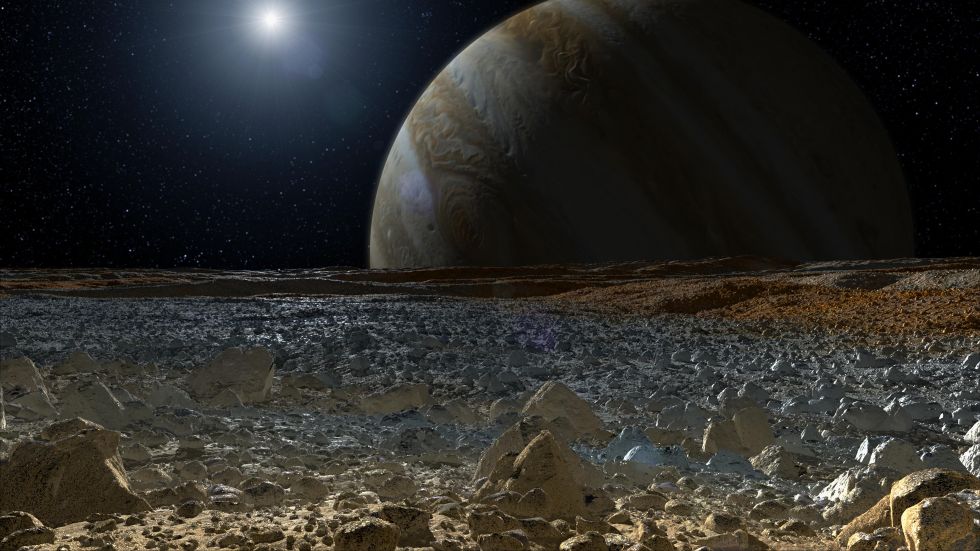
This was an exciting and very important week for NASA and planetary exploration: the new NASA budget from Congress is better than expected and, in the words of The Planetary Society, “extraordinary.” There is a healthy increase for planetary science, and one new mission in particular which a lot of people have been waiting for: a new mission to Europa. Not only is it now fully funded, the Congressional plan goes further than the initial mission concept in calling for not just multiple flybys, but also a lander.
As reported on Ars Technica, Congress has now mandated that the mission must include a lander. That is an exciting development for anyone who has been advocating a return to Europa to further study its subsurface ocean and potential habitability. As stated in the new budget legislation:
“This mission shall include an orbiter with a lander that will include competitively selected instruments and that funds shall be used to finalize the mission design concept.”
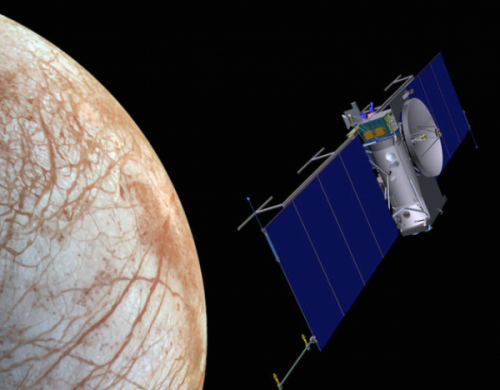
The flybys will be able to greatly increase our knowledge of conditions inside Europa beneath its ice shell crust, but a lander will also add to that enormously. Plus, of course, a view from the surface of Europa, with Jupiter looming large in the sky, is something that a lot of people have dreamed of. The mission as of now has a launch date for sometime in 2022.
Congress has now allotted $1.631 billion for NASA’s Planetary Science Division. That is $270 million more than had been requested by President Obama. Of that, $175 million is directed to the new Europa mission, plus an additional $25 million for “icy satellites surface technology” development. Overall, the new NASA budget for fiscal year 2016 is $19.3 billion.
As noted by Texas Congressman John Culberson, who chairs the House Appropriations subcommittee (with jurisdiction over NASA): “This number, this year, is the largest vote of confidence that Congress has ever given NASA. There’s enough money to do everything on their plate.”
“Until now Europa has had no advocate,” he added. “NASA headquarters was prepared to let the Europa mission die. But I have always believed there is life on other worlds, and I have wanted to have a hand in helping to discover life on other worlds.”
NASA itself, however, had been less enthusiastic about the Europa mission, in particular a lander. As NASA administrator Charles Bolden explained: “My scientific community, the people who do mission planning, say we need to go and do a little research with the first mission to Europa to determine whether that’s a place we want to send a lander. That’s the point of our big disagreement with Congressman Culberson right now. He wants a multibillion dollar Europa mission that has a lander on the first flight and everything. Our belief is that is imprudent from a scientific perspective.”
It wasn’t until the fiscal year 2015 budget that NASA finally added a Europa mission study program. Before that, it wasn’t even considered a priority. That view didn’t sit well with many people, including Culberson.
“I told them to do whatever it takes,” said Culberson after meeting with NASA scientists. “All of humanity is going to want to know what’s under the ice.”
Europa is now considered to be one of the best places to search for evidence of alien life elsewhere in the Solar System. Conditions in its subsurface global water ocean are thought to be similar to those deep in Earth’s oceans, where a wide variety of life thrives. Even if there was only microscopic life on (in) Europa, it would be a tremendous discovery. But in order to find out how likely that prospect might be, a return mission is absolutely necessary. Previous missions such as Voyager and Galileo gave us important clues, but they were not capable of determining whether any life exists in the ocean below.
A new Europa mission, known as the Europa Clipper, would make multiple close flybys of the moon, taking many high-resolution images and probing the subsurface with ice-penetrating radar. A magnetometer would also study the moon’s magnetic field which would allow scientists to determine the depth and salinity of its ocean.
The mission would also investigate another, still controversial aspect of Europa: the possible existence of water vapor plumes similar to those on Enceladus. They were first tentatively observed by the Hubble Space Telescope in 2012, but more recent studies have not yet conclusively seen them again. They may be periodic or very faint, or possibly not really there at all. But if they are, they could provide a much easier way of determining just what conditions are like in the Europan ocean below the ice cover, since they would likely originate from that ocean, like they do on Enceladus.
“When we had Galileo at Jupiter we didn’t look for plumes because we didn’t know they were there,” said Jim Green, who oversees NASA’s Planetary Sciences division. “They were probably all over the place, and we probably missed opportunities all over the place. We were just too ignorant to recognize the opportunities.”

There may even be a “plume probe” which would detach from the main spacecraft and fly close to the surface to obtain samples from the plumes (if they exist).
Other, more distant future missions being proposed would include a drill to dig down through the ice cover. The technology is being developed, but such a mission is still some ways off. Drilling through polar ice on Earth can be difficult enough, never mind Europa. If plumes are confirmed on Europa, that would simplify things a lot.
Instruments being designed for the flyby spacecraft include:
- Plasma Instrument for Magnetic Sounding (PIMS)
- Interior Characterization of Europa using MAGnetometry (ICEMAG)
- Mapping Imaging Spectrometer for Europa (MISE)
- Europa Imaging System (EIS)
- Radar for Europa Assessment and Sounding: Ocean to Near-surface (REASON)
- Europa THermal Emission Imaging System (E-THEMIS)
- MAss SPectrometer for Planetary EXploration/Europa (MASPEX)
- Ultraviolet Spectrograph/Europa (UVS)
- SUrface Dust Mass Analyzer (SUDA)
A nominal mission would include 45 close flybys of Europa at altitudes ranging from 1700 miles to 16 miles (2700 kilometers to 25 kilometers) above the surface. Very little is known about what a lander would include, since NASA has only just now been told to develop one, but it almost certainly would have cameras and instruments to analyze ice and rocks.
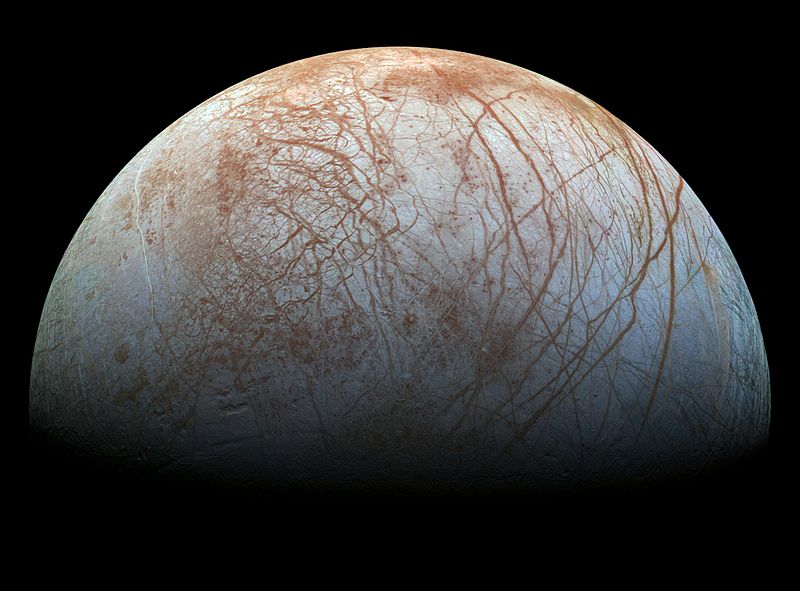
“It’s a great day for science,” said Joan Salute, Europa program executive at NASA Headquarters in Washington. “We are thrilled to pass the first major milestone in the life-cycle of a mission that will ultimately inform us on the habitability of Europa.”
There is a lot of work to do to prepare the mission for a 2022 launch, especially if a lander is now part of the equation. Landing on Europa will require surviving the harsh radiation from Jupiter on the surface, as well as extreme cold, around -410˚ F (-210˚ C). The lander will likely have a minimum 10-day lifespan, powered by batteries, although it may also be able to use solar panels to extend that a bit more. Life of any kind would be unlikely on the surface, but if there is any biological activity in the ocean below, the deposits left there might hold clues.
It was also recently reported on AmericaSpace that substances from the ocean below have been detected on Europa’s surface, in regions known as “chaos terrain.” It is thought that water from the ocean below has made its way to the surface in these areas, depositing various minerals or salts, etc.
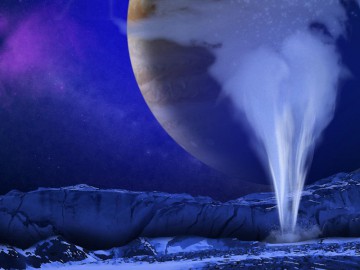
According to astronomer Mike Brown: “We think we might be looking at salts left over after a large amount of ocean water flowed out onto the surface and then evaporated away. They may be like the large salt flats in the desert regions of the world, in which the chemical composition of the salt reflects whatever materials were dissolved in the water before it evaporated.”
It is also now thought that dark material in large fissures on the surface are sea salt deposits left over after water quickly evaporated upon reaching the surface. Such areas on the surface would provide another ideal way to learn more about Europa’s subsurface water, if indeed there is a connection between them and the ocean.
Since the ocean floor is in contact with rock like Earth’s oceans, there would be minerals which could be used as nutrients by any putative life forms. There may also be hydrothermal activity, again like on Earth as well as Enceladus, which support life even in the dark depths (at least on Earth). Europa’s ocean seems to be quite able to support life of some kind. The question is, does it?
There may also be plate tectonics on Europa, which would also increase the chances for life.
As well as Europa, the new NASA budget also provides the necessary funding to continue both the Opportunity rover mission on Mars and the Lunar Reconnaissance Orbiter at the Moon, both of which had been zeroed out in the President’s earlier budget proposal. The Opportunity rover is still going strong on Mars since landing in 2004, and supporters were understandably dismayed that it might end soon, not because of technical problems, but rather budget problems. There is also $22 million earmarked for the upcoming Mars 2020 rover mission. Plus, there is now additional funding, $15 million, for the production of Plutonium-238, which is used to power deep space probes.
In addition to planetary science, the new budget also allocates $1.243 billion for Commercial Crew (sending U.S. astronauts to the International Space Station starting in 2017), $2 billion for the Space Launch System (SLS), $1.921 billion for Earth Science studies, and $686 million for the Space Technology Mission Directorate (STMD).
On Dec. 18, the bill passed both the Senate and House with large majorities. The 2017 budget proposal will next be released by the President in February. But the 2016 budget is already an exciting step forward in planetary exploration, and yes, we are finally on our way back to Europa. In the film 2010: The Year We Make Contact, humanity was warned:
“All these worlds are yours except Europa. Attempt no landing there.”
But it seems we’re going anyway. …
Be sure to “Like” AmericaSpace on Facebook and follow us on Twitter: @AmericaSpace
,
Missions » Europa Mission »



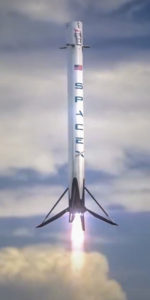
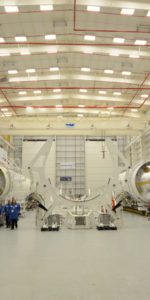
The SLS is almost ready to go. One mission for it and many soon to follow this one.
AWESOME!!!
A satellite doing flyby’s of Europa is great, but adding a lander as well, man, that will be spectacular! Great job by congress for fully funding humanity’s most important accomplishment: Exploration.
Culberson “gets it” and is a hero to the scientific community. This is the best piece of news we could hope for!
“This number, this year, is the largest vote of confidence that Congress has ever given NASA. There’s enough money to do everything on their plate.”
For folks in Congress, NASA’s “plate” most likely includes fully implementing the SLS/Orion enabled ISS emergency backup mission capability and Lunar surface missions required in the ‘National Aeronautics and Space Administration Authorization Act of 2010 (PUBLIC LAW 111-267 OCT. 11, 2010)’.
Amazingly wonderful news!
Thank you for the article Paul Scott Anderson!
James
But first Congress wants a station or infrastructure in Lunar orbit to support/enhance Orion cislunar operations.
Wonderful news on the scientific front. It’s not the 3 to 5 billion dollars raise per year that I have said NASA should get. What they got is amazing considering the political hostility between the Republican Congress and the President.
Arth –
“But first Congress wants a station or infrastructure in Lunar orbit to support/enhance Orion cislunar operations.”
Great! Putting “a station or infrastructure” in a stable low polar Lunar orbit is probably the lowest risk and lowest cost option for initial ISRU missions to the polar regions.
The polar regions are where we can find frozen H2O and frozen volatile gases, solar power 24/7 for 80% or more of a Lunar month, moderate non-crater surface temperatures that usually stay close to around a -55 degrees Centigrade, and a whole lot more.
“Recent studies performed by NASA mission designers concluded that equivalent landing site access and ‘anytime abort’ conditions could be met by rendezvous missions in LLO with less propulsive delta-V and lower overall Initial Mass in Low Earth Orbit (IMLEO). If used only as a node for lunar missions, the L1 Earth-Moon LPR is inferior to the LOR mission mode.” From: Page 15 ‘National Exploration Systems Architecture Study 1. Executive Summary’ 2005
So with a SLS launch the cost starts at $1.5B but gets the probe there in 24 months? And if they are doing a lander then why not include a nuclear powered ice penetrator to drop an autonomous AI swimmer probe. If you spend $1.5B for launch then spend $3.B for a probe that will do lots and lots. I hope I hope!.
It would be nice to have all the things you mentioned Tracy. However, I feel that it is going to be enough of a challenge just to design and build a “basic” lander for Europa given the time frame. But, depending upon the results of this proposed mission and given that the SLS is the most viable launcher for “fast” missions to the outer planets and their moons, Congress could mandate NASA to perform another followup mission involving the hardware you’ve mentioned. All-in-all really exciting stuff. Regards, Paul.
Check out the link… I have been following this company ..they build both the penetrator and the AI swimmer..
http://www.wired.com/2012/04/bill-stone-laser-powered-europa-rover
Interesting company. I hope they are able to find backers, like Musk did, so that they can be used for multi space based applications.
Tracy, you are absolutely correct. If you go through all of that planning, development, and so on, it makes perfect sense to include the nuclear-powered penetrator. Opportunities to fly missions to such distances involve much “time” and it is imperative to get the “biggest bang for the buck.”
I really wish people would fact check before putting shit like this up and giving people false info.
The mission is un-named, it is scheduled “Sometime in the 2020’s”. It will enter a high orbit around jupiter after a 4 year journey there, and once there, it will complete 45 flybys. There is NO LANDER, and the probe is going to be so compact that they are only selecting 9 instruments to place on it. If you want information on nasa, they have a homepage that details everything about this project as well as is where this was supposedly sourced from. If NASA had announced it, it would be on their page too.
In one article it does mention that this probing mission is just the first step they want to take towards Europa, but it never mentions any kind of lander.
http://www.nasa.gov/europa
Spenser, we are simply reporting that NASA has now been directed by Congress to include a lander in the mission. Again, as stated in the new budget legislation:
“This mission shall include an orbiter with a lander that will include competitively selected instruments and that funds shall be used to finalize the mission design concept.”
This only happened within the past few weeks, so no, NASA would not likely have anything about it yet on their website. It hasn’t even been designed yet! We already knew about the 45 flybys and instruments planned for the main spacecraft itself, both mentioned in the article. It has tentatively been called Europa Clipper but that could change of course.
And more here now about the lander:
http://www.planetary.org/blogs/guest-blogs/van-kane/20160105-nasa-europa-lander.html?referrer=https://www.facebook.com/
Thank you for finally producing a source that every other source didn’t disagree with. But I still stand by that nasa, who updates all social media’s at least a dozen times a day, would have started blowing up every resource they have. But this is much more believable (perhaps with a gag order on the details from Jul and nasa). But > still tend to believe nasa’so firsthe estimate of 2 probes to determine requirements and conditions a lander would have to go through before dedicating the budget to a guesswork multi-billion dollar vehicle.
If more sources pop up I’d love to look at them, but as it stands it’s like the vaccine argument. Thousands of results debunking it, but only a handful supporting it
I mean no disrespect and apologize for my initial gruff attitude but I spent a good long time looking for anything to support this and only found tabloid-esque sites that not only said this but also claimed we already discovered life on Europa.
Spenser Erbschloe
Now all the talking heads who lamented Congress (with their cutie-pie “Senate Launch System” remarks) interfering in space matters have egg on their faces. We are going to get an orbiter and lander for Europa by law.
What I find most delicious about all this–is that all the noisemakers at JPL and elsewhere who tried to kill SLS will likely be working on a Europa lander BECAUSE of SLS.
MSFC will take your apologies now.
FYI